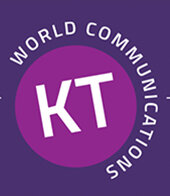Making Social Media Accessible
July is Disability Pride month. If you didn’t know that, you’re not alone! The movement has been around over 200 years, and its landmark legislation, the American with Disabilities Act, turns 34 this year. However, as digital marketers, there are a lot of easy ways to improve social media accessibility.
As with most accommodations, making social media content more accessible benefits not only those with vision impairment, hearing loss, or other disabilities—but almost everyone who visits your page! Read on for just a few of the ways you can improve the accessibility of your social content.
1) Use Alt Text and/or Image Descriptions
Alt text is that short description that comes up when you hover over an image online. While many of us use this for context, for people using screen readers, it’s essential. Not every social platform makes it super easy to add this, but you can check out Disability: In’s toolkit on how to do it on native platforms.
Image descriptions are longer and provide more context and detail. You’ll often see these in captions for images and videos.
2) Put Captions on All of Your Videos
This is so important! Not only does it help hearing impaired, it also helps my friends who scrolling while “nap trapped” by infants and millennials like me who can’t hear without reading subtitles. It’s also been proven that subtitles increase watch time on reels and videos. I recommend having some fun with captions on the Captions app—so long as the template you choose is still accessible.
3) Use emojis sparingly and at the end of posts
I’m as addicted to 😂 as everyone my age, but screen readers haven’t caught up to us yet (or maybe they just find it cringe, like my little cousins do). So if you’re using emojis in your posts, think about what they’re actually doing and try and put them at the end of your post, so the reader doesn’t need to interrupt itself.
4) Capitalize each word in a hashtag
You may be hearing daily that hashtags either are or are not a savvy strategy these days. I don't think they're dead yet! But if you want everyone to be able to read your hashtags, it’s important to format them properly. According to Accessible Social, compound hashtags should be in #camelCase or #PascalCase.
5) Check the color contrast of your images
Color contrast is the difference between the color of text and the color of the background behind it. For federal content creators, it’s required to maintain contrast ratio of 4.5:1 for regular text and 3:1 for large text. That's a good guideline for all of us! There are a ton of free contrast checkers online. WebAIM’s Contrast Checker, Accessible Web’s WCAG Color Contrast Checker, or Deque’s Color Palette Contrast Checker can help.
I’ll be the first to admit that I don’t have a 100% track record when it comes to integrating these social media accessibility tricks, but I have made a commitment to getting better at it this year, and I hope you'll join me. By taking a few minutes to check the accessibility of your social media content, you can expand your online community to even more people. And building community is what social media is all about!
Don’t forget: any of us can become disabled at any moment. It’s up to all of us to create a world where differences in abilities are not disabling.
Sources:

